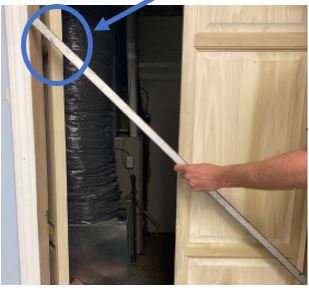
The Art of Swinging Doors: Mastering Installation and Maintenance
The Art of Swinging Doors: Mastering Installation and Maintenance
Elegant and functional, the classic swinging door is a fixture in most homes and commercial spaces. However, despite their seeming simplicity, swinging doors require careful installation and regular maintenance to function properly and maintain their aesthetic appeal. Whether you're a homeowner looking to replace your doors or a property manager maintaining a commercial building, mastering the art of swinging door care can save you time, money, and a great deal of frustration.
In this comprehensive guide, we’ll walk you through the essential steps for installing swinging doors, provide a roadmap for ongoing maintenance, and empower you to troubleshoot and solve common door issues like a pro. Whether you’re a seasoned DIY enthusiast or a first-time homeowner, these tips will ensure that your swinging doors enhance your space for years to come.

Proper Installation Techniques
Installing a swinging door is a project that requires precision and attention to detail. Below, we outline the step-by-step process for a successful installation:
Step 1: Measure Twice, Cut Once
Proper measurements are the foundation of a successful door installation. Measure the height and width of the door frame, accounting for any discrepancies in the frame’s squareness. When dealing with irregular frame shapes, the highest and widest points should be used as the reference.
Step 2: Hinges and Hanging
Choose the appropriate hinges for your door type and weight, ensuring that they are secured to the door with screws that are long enough to reach the frame. The hinges should be attached to the side of the door opposite the direction of the swing, typically 6 to 10 inches from the top and bottom of the door. Test the hinges before fully securing them to the frame.
Step 3: Install the Door Knob and Lock
Install the door knob and lock according to the manufacturer's instructions. Ensure that the knob and lock operate smoothly without any interference when the door swings.
Step 4: Test for Smooth Operation
Once the door is hung, test its operation to ensure it swings smoothly and freely, without catching on the frame or flooring. If the door drags, you may need to adjust the hinges or plane the door slightly to provide clearance.
Maintenance Guidelines for Longevity
Regular maintenance is key to keeping swinging doors looking great and functioning properly. Here are some tips to keep your doors in top condition:
Keep Them Clean
Regularly clean your doors to prevent the buildup of dust and grime that can impede operation and damage the finish. Use a mild detergent and water, and avoid harsh chemicals that can strip the door’s protective coating.
Lubricate Moving Parts
Periodically lubricate the hinges and moving parts with a silicone-based lubricant to prevent squeaking and ensure smooth operation. Be sure to wipe away any excess oil to avoid attracting dust and dirt.
Inspect for Wear and Tear
Perform routine inspections to check for signs of wear, such as cracks or splinters in the wood, or loose screws in the hinges or locks. Repair or replace these components as needed to prevent further damage.
Adjust for the Seasons
Wooden doors can expand and contract with humidity and temperature changes, which may affect how they fit in the frame. Adjust the hinges periodically to ensure the door swings freely without sticking.
Troubleshooting Common Issues
Even a well-maintained door can encounter issues. Knowing how to diagnose and fix these problems can save you from having to call in a professional.
Sticking or Binding
If the door sticks or binds against the frame, the cause may be a hinge that's come loose or a warped door. Tighten any loose screws in the hinges and check for warping. Minor warping can often be corrected by adjusting the hinges or sanding the edge of the door slightly.
Door Squeaking
A squeaking door is usually the result of metal-on-metal contact between the hinges and the hinge pins. Lubricate the hinges with a silicone spray or apply a dab of petroleum jelly for a quick fix.
Loose Door Knob
If the doorknob feels loose, the set screw or mounting screws may have become stripped. Remove the knob and inspect the screws. If they are damaged, replace them with new ones and re-install the knob.
Sluggish Lock Mechanism
A lock that becomes difficult to operate can be a sign of a dirty or worn mechanism. Disassemble the lock, clean all parts with a solvent, and reassemble. If the lock is still sluggish, it may be time for a replacement.
Uneven Swing
An uneven swing, where the door doesn’t open or close in a straight line, can be caused by several factors, including a misaligned frame or improperly installed hinges. Check for levelness and correct the frame as needed. If the hinges are the issue, you may need to re-hang the door.
By following these installation and maintenance tips, you can ensure that your swinging doors contribute to the overall charm and functionality of your living or working space. Remember to approach each step with patience and a keen eye for detail, and don't hesitate to address any issues promptly to prevent them from snowballing into larger, costlier repairs. Your diligent door care efforts will not go unnoticed — a well-kept swinging door is a delight to use and an enduring mark of a well-maintained space.
